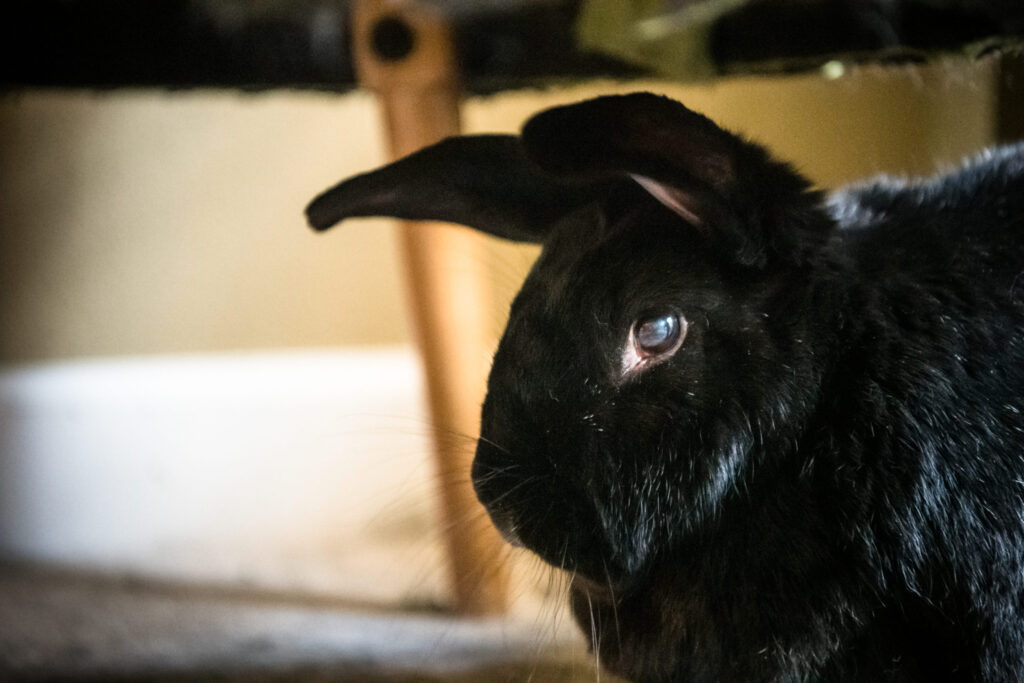Antibiotics are used to treat bacterial infections. When needed for treatment of an infection in a rabbit, these drugs should be prescribed only by a veterinarian well-versed in rabbit medicine. Infections caused by bacteria can occur anywhere in the body. The best way to determine which type of antibiotic will be most effective against a particular infection is to take a sample of infected tissue (for example, a small section of the wall of an abscess, or a surface swab of the affected area), and send it to a laboratory for culture and sensitivity testing. It is advisable to have both an aerobic and an anaerobic bacterial tests performed to best determine what medications will be most effective.
In some cases, the infection may occur in an difficult-to-access place, such as inside the respiratory tract, urinary tract, inside of the eye, intestinal tract or bone. In this case, the veterinarian may need to make a “best guess” about which antibiotic is best to treat the problem.
A review of rabbit physiology helps us to understand why antibiotic use in rabbits is associated with risk. Rabbits have an unusual digestive system, inhabited by a variety of essential microorganisms that work together to digest food. The balance (i.e., relative population numbers) of microorganisms in the digestive system is influenced by many factors, including diet and, sometimes, medications.
Some antibiotics can adversely affect the intestinal flora, killing beneficial bacterial and allowing resident pathogenic bacteria, once held in check by competition from the normal intestinal inhabitants, to overgrow. If the pathogenic bacteria are of certain strains, they will produce toxins that can kill the rabbit. This two-step process can take as long as 10 days after treatment has ended to manifest its deadly conclusion, which can obscure the original cause of the problem to veterinarians not familiar with rabbits. Your bunny may act normal up to one to two days before a disaster strikes, at which point he or she will develop reduced activity, loss of appetite, watery diarrhea, rapid dehydration, and ultimately can die. Profuse, watery diarrhea (where there are NO normal or even slightly formed stools) in a rabbit is an extreme emergency (link to Medical FAQs on diarrhea) and death can occur in 24 to 48 hours after it first appears.
The choice of antibiotic and route of administration are important factors your veterinarian considers when treating your rabbit. Table 1 contains a summary of some commonly available antibiotics, routes of administration, and the risk of antibiotic-associated diarrhea due to disruption of the normal intestinal flora. These data were compiled from studies performed or veterinary experience gained with rabbits (Modified from Textbook of Rabbit Medicine by Frances Harcourt-Brown).
Table 1. Antibiotics Used in Pet Rabbits
| Antibiotic | Injectable Use? | Oral Use? | Other Use? | Risk of Antibiotic-Associated Diarrhea |
| Amikacin | Yes, with caution: nephrotoxic | No oral form available | Yes, impregnated in antibiotic beadsYes, in nebulization protocols | Low |
| Amoxicillin | No | No | No | High when given orally |
| Ampicillin | No | No | No | High when given orally |
| Azithromycin | No injectible form available | Yes | No | Low |
| Cephalosporins (Ceftazidime, Cefazolin, Ceftiofur, Cefriaxone, Cephalexin, Cephaloridine, Cephalothin) | Yes | No | No | High when given orally |
| CEFTIOFUR | No | No | Yes, impregnated in antibiotic beads | Low, when impregnated in antibiotic beads (bone abscess) |
| Chloramphenicol | Yes | Yes | Yes, ophthalmic ointment | Low |
| Ciprofloxacin | Yes | Yes | Yes ophthalmic drops | Low |
| Clindamycin | No | No | No | High when given orally |
| Difloxacin | No | Yes | No | Low |
| Doxycycline | Yes | Yes | No | Low |
| Enrofloxacin | Yes | Yes | Yes; otic drops | Low |
| Fusidic Acid | No | No | Yes, ophthalmic ointment | Low when used as eye ointment |
| Gentamicin | With extreme caution: nephrotoxic | With extreme caution: nephrotoxic | Yes, ophthalmic drops, impregnated in antibiotic beadsYes, in nebulization protocols | Low |
| Lincomycin | No | No | No | High |
| Marbofloxacin | No | Yes | No | Low |
| Metronidazole | No | Yes | Yes | Low |
| Oxytetracycline | Yes | No | No | LowOral use not recommended, calcium in GI tract inactivates drug |
| Penicillin (procaine) | Yes | No | No | High, when given orally or applied topically |
| Penicillin (procaine and benzthiazine) | Yes | No | No | High, when given orally or applied topically |
| Streptomycin | No, nephrotoxic | No | No | High |
| Sulfadimethoxine | No | Yes | No | Low |
| Tetracycline | Yes | No | No | LowOral use not recommended, calcium in GI tract inactivates drug |
| Tilmicosin | No | No | No | Risk of fatal adverse reaction: sudden cardiac arrest within ~30 minutes of administration |
| Trimethoprim/sulphadiazine | Yes | Yes | No | Low |
| Trimethoprim/sulfamethoxazole | Yes | Yes | No | Low |
| Tobramycin | No, nephrotoxic | No | Yes, impregnated in antibiotic beadsYes, ophthalmic and otic drops | Low |
| Tylosin | Yes | No | No | Unknown |
©Copyright Dawn Sailer. All Rights Reserved. Republished with the permission of the author.

